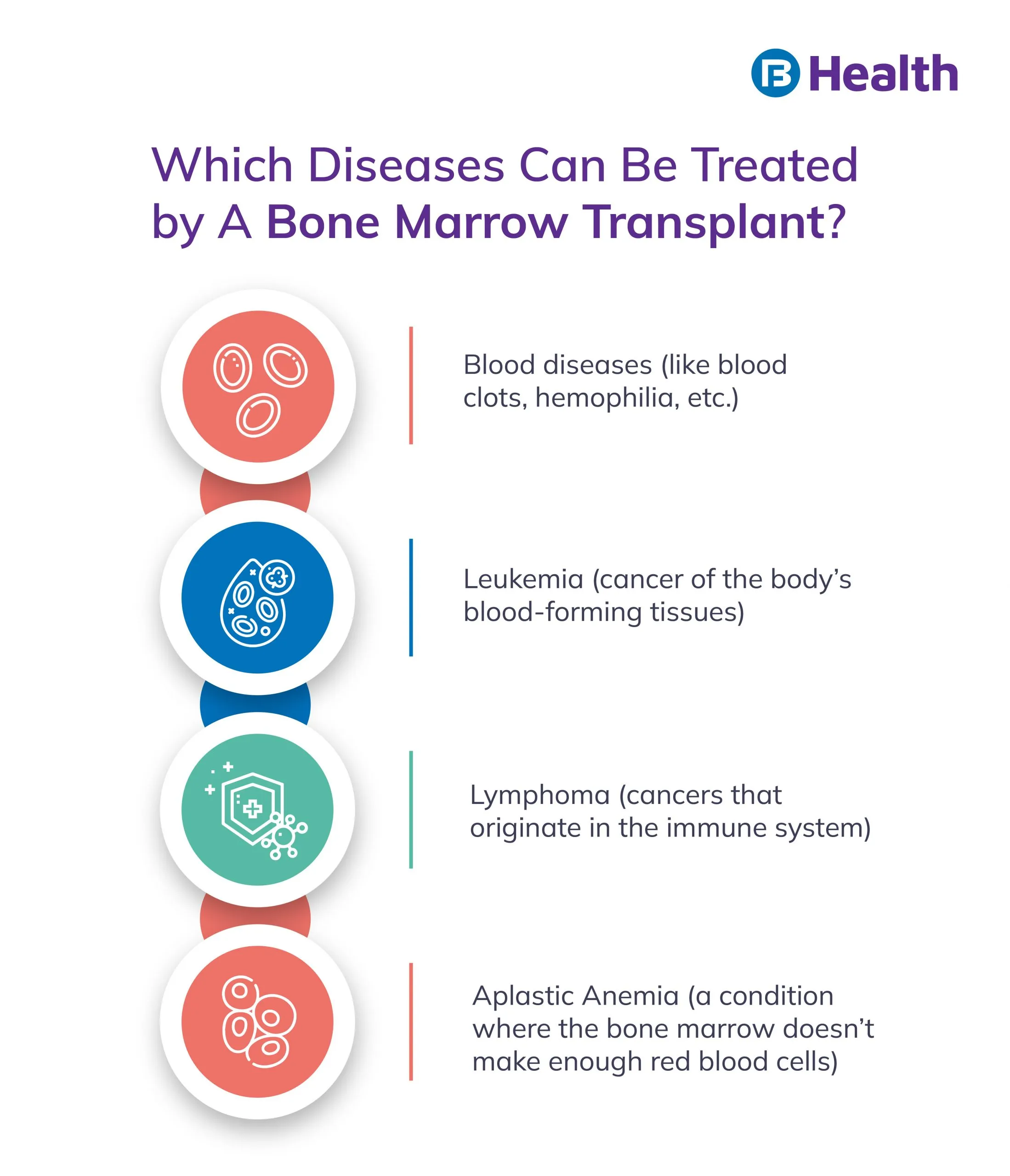Orthopedic | 6 min read
World Marrow Donor Day: Guide on Risks of Marrow Donation
Medically reviewed by
Table of Content
Synopsis
The third Saturday of every September is celebrated as World marrow donor day. This day is celebrated yearly to thank all the blood stem cell donors all around the world. Also, to thank all the unknown donors and the donors who have enlisted their names and waiting to donate. Thousands of people die every year from curable diseases because they don't have ready access to donated bone marrow. Another reason for celebrating this day every year is to spread awareness.
Key Takeaways
- It is important to spread awareness about world marrow donor day
- Be a marrow donor to save lives, if your body permits
- Understand the risks before donating
Every third Saturday in September, WMDD is celebrated worldwide. This year it will be on September 17. The celebration will take place in more than 50 nations across all continents, reaching hundreds of thousands of people via traditional and social media.
There is the importance of Blood Cancer Awareness Month, but very few of us know about World marrow donor day.
What is Bone Marrow?
Bone marrow is the soft, spongy tissue that makes blood cells in our bodies. It's found in the hollow spaces inside bones and our spleen. It carries the cells called stem cells. The cells get changed into blood cells. Every day, bone marrow can make 200 billion blood cells. [1] This gets quite troublesome as our blood cells have a limited life span of about 100-120 days if it is red blood cells. [2] This is why they need to get replaced, which makes the bone marrow function quite complicated for our body.
What is Marrow Transplant?
Marrow transplantation is a process by which blood-forming stem cells are removed from one person, placed into another person's body with matching genetic makeup, and then returned to the donor.
The bone marrow contains millions of cells that give rise to blood, immune system, and digestive system cells. It also produces red blood cells and platelets—important components in our body's ability to fight disease.
Who Needs a Bone Marrow Transplant?
Bone marrow transplants are used to treat a variety of blood diseases, including leukemia and lymphoma. Some of the most common diseases treated with bone marrow transplants include:
- Leukemia
- Lymphoma (cancers that originate in the immune system)
- Aplastic Anemia (a condition where the bone marrow doesn't make enough red blood cells)

How Can You Become a Donor?
You must be between the ages of 18 and 60, in good health, and have a blood type match. If you are not eligible to donate, it's still worth asking your doctor about becoming a bone marrow donor!
You will be asked questions about your medical history and current medications. Your medical history should include any illnesses or injuries that may affect your ability to make blood cells. This includes cancer treatment or other procedures that could affect how efficiently your body makes new blood cells (e.g., chemotherapy). It's also important that you let them know if there's any chance someone else might inherit one of these conditions from their family members. The conditions that can stop you from becoming a donor are-
- Autoimmune diseases like Diabetes
- Heart health
- If you have HIV or AIDS
To be a donor, a tissue sample is needed to be provided. The inside of your cheeks will be swabbed, and you will have a sign a consent form. Besides, you might also need to go through some additional blood tests and physical tests. The donation process takes 20-40 hours over four to six weeks.
Know The Signs And Symptoms Of Bone Cancer
The symptoms of bone cancer can be similar to other conditions, so it's important to know what to look for when experiencing unexplained pain, swelling, or tenderness in your bones.
Symptoms
- Pain in the bones
- Swelling in the bones (often around an injury) and tenderness around the injured area. If you have a lump on your leg that doesn't go away after a few days, it could be an infection caused by inflammation or cancerous cells growing within your tissue - this might mean surgery is needed immediately!
Plan for Your Care
- Know what type of cancer you have and its risks, such as the possibility of brain cancer or an increased risk of death if the disease spreads to other parts of your body.
- Ask questions about treatment options available, including how long they'll last and what side effects they might cause (such as fatigue). Make sure you understand each treatment option's risks and benefits before deciding whether or not to participate in bone marrow donation. Letting others know why they should be chosen over another may also help them understand why it's important for them too!
Never Skip Follow-up Care
In addition to being a donor, you should also be aware of the follow-up care that your donation may require. Suppose you don't follow up with your doctor or nurse after donating bone marrow. In that case, they may not know if your bone marrow is working properly and, therefore, cannot provide proper treatment for any illnesses or other conditions you might have developed after donating.
If there are any issues with your health, it's important to make sure they are taken care of as soon as possible so that they don't get worse while you wait for treatment from another doctor or clinic.
You can do all these things and still get bone cancer
Sometimes after doing all these things, still get bone cancer. Bone cancer is a serious disease that starts in the bones but is rare. Bone cancer usually develops slowly over years or decades and is most common in older people who are overweight or obese. The good news is that once your body has been exposed to a carcinogen (a substance that causes cancer), you have time to reduce your risk of getting this type of cancer by taking steps such as eating well and exercising regularly—and by avoiding tobacco smoke exposure outside on sunny days!
Risks of Donation Bone Marrow
Anesthesia can be the main risk of donating bone marrow. Most people can bear general anesthesia, but some people cannot. It can go too far for some people. They might face:
- Postoperative confusion
- Heart attack
- Pneumonia
According to a survey, almost 2.4 percent of donors can have severe complications from anesthesia or bone damage. [3]
Some people worry about losing their bone marrow and having a weak immune system. But, you do not need to worry. You will lose a small amount of your bone marrow, which will be replaced within six weeks.

What Can Be The Side Effects?
Some people might face some side effects like:
- Vomiting
- Nausea
- Sore throat because of the breathing tube
Though general anesthesia can be fine, regional anesthesia can make you face temporary drops in your blood pressure and headache.
Also, there are some side effects of marrow donation are:
- The place where the marrow was harvested might feel stiff
- Hip or back pain
- You might face it troublesome while walking for some days
- You can feel fatigued too for a few weeks
For How Many Times One Can Donate Marrow?
Marrow can be donated several times if your body permits.
Additional read: World Blood Donor DayThe chance to save a life is a gift many don't take lightly. When considering donating bone marrow, many questions come to mind. Marrow donation is a safe procedure with minimal risk to the donor. Although there are some potential risks to consider before becoming a donor, the potential gain of helping another person out of their life-threatening situation can help to ease any doubts.
We hope this information has helped you understand the risks of bone marrow donation and why it's so important. If you or someone you love is considering becoming a bone marrow donor, please ask your doctor about all options before making a decision. Let us all celebrate world marrow donor day and thank all the donors and future donors for their noble decision.
You can visit Bajaj Finserv Health to gain more valuable insights into various global health concerns.
References
- https://pubmed.ncbi.nlm.nih.gov/33790808/
- https://www.medicalnewstoday.com/articles/285666#:~:text=Bone%20marrow%20produces%20200%20billion%20new%20red%20blood,year%20with%20diseases%20that%20require%20bone%20marrow%20transplants.
- https://bloodstemcell.hrsa.gov/about/faqs
Disclaimer
Please note that this article is solely meant for informational purposes and Bajaj Finserv Health Limited (“BFHL”) does not shoulder any responsibility of the views/advice/information expressed/given by the writer/reviewer/originator. This article should not be considered as a substitute for any medical advice, diagnosis or treatment. Always consult with your trusted physician/qualified healthcare professional to evaluate your medical condition. The above article has been reviewed by a qualified doctor and BFHL is not responsible for any damages for any information or services provided by any third party.




